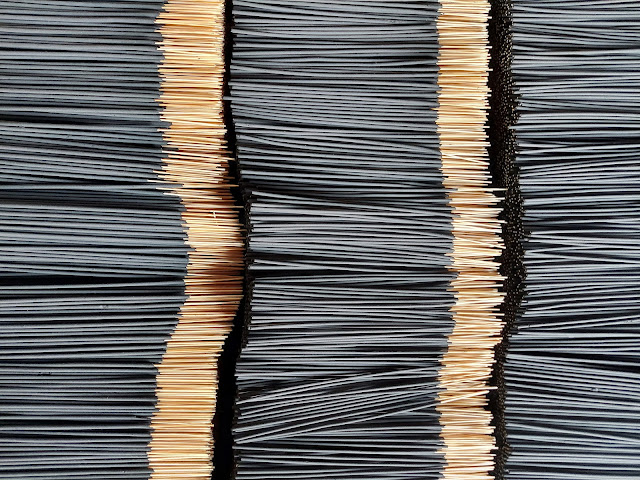These are technological sensoriums. A small town in Uttar Pradesh, an hour and a half away from Kanpur is Kannauj, which is known as the perfume capital of India. Here, attar has been manufactured through the harvest of a range of flowers and other fragrant plants though natural process since more than a millennium. The histories of this trade are speculative. While the techniques have certainly been developed much before, it was perhaps during the period of Mughal queen Nurjahan that the apparatus of distilleries was perfected further.
Sweet smelling petals or leaves of flowers or plants are introduced in large containers called degs and boiled with water. The degs have a thin long elbowed pipe made up of cane that pass the scented vapour into the bhapka - a receiver. The bhapka has a shallow layer of a base oil that soaks and settles the smell from the steam into itself, along with some essential extract. This extract contains some oil as well as water. While the water is let off, the essential oil remains to be used for application.
Each step of the process is detailed, and observed carefully. These assemblies are meticulous and need to be monitored with care. The pots, pipes, kilns, containers are measured to maintain their equation to the preserving scent as well as the operating body. As one enters the closed spaces of these perfume workshops, that once were in the open, each part feels phenomenologically animated. Most times, the building is shaped like a chimney - that contains the hearth in its belly, allowing the fumes to escape through its neck and mouth above. Almost a reverse wind tunnel, the perfumery space is mystified with light and air, smell and smoke.
The essential oils collected - the ruh of the flowers as they say - are poured into bottles made up of camel leather - called kuppis. These allow the slow seepage of excess water that may lay trapped in the final extract over a long period of time while keeping in the oil. The leather - as one of the last kuppi-makers Mustaqueem bhai tells us - needs to be procured by putting to death living camel for only the pores of that skin shall remain open. A deceased camel's skin may not serve the purpose. The skin is tanned and eventually shaped over an earthen mould which is removed once the bottle hardens. The skin is optimised for making kuppis of different sizes - nothing goes waste.
Speaking of waste, even the sludge of flower petals are kept for processing them into agarbattis, or incense sticks. These are kneaded with some amount of husk and clay and rolled into aroma sticks. Today these are available in different shapes, sizes and colours. Some other materials like saffron - that still have substantial smell - are passed on to sweet shops for further consumption. Some other left overs are used as fertilisers or compost, along with the ash of the firewood that fuels the deg-bhapkas. The excessive water is largely thrown away, or alternatively processed into flavoured waters for consumption or aroma diffusers. It is said that (and we also experienced) that the drains of Kannauj once smelled so fresh because all they primarily carried was rose water.
Surrounded by large farms of flowers and scenting shrubs, Kannauj is quiet container that produces perfume for not only India, but the entire world. Needless to mention that the principal economy of the town is production of a variety of perfumes, and the sellers are largely producing stock to be exported to international markets. They are hardly interested in retail - most shops are traditional gaddi style where significant deals are struck every week. These perfumes travel to places like Paris and Dubai where they are studied and enlarged in their volumes. These are then recomposed with different compounds, and mixed with various "bases" (like oil, alcohol, spirit, etc.) and created into the modern bottled perfumes that we buy today. There's a big industry of people quietly creating seductive smells for us, and remain as invisible as fragrance lay dissolved in the air.
















No comments:
Post a Comment